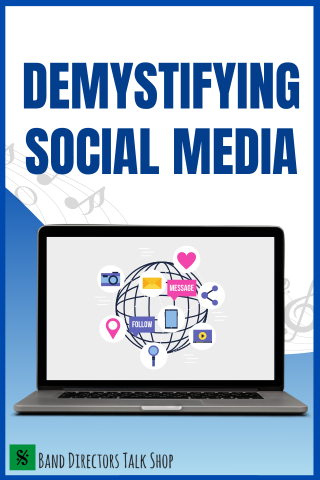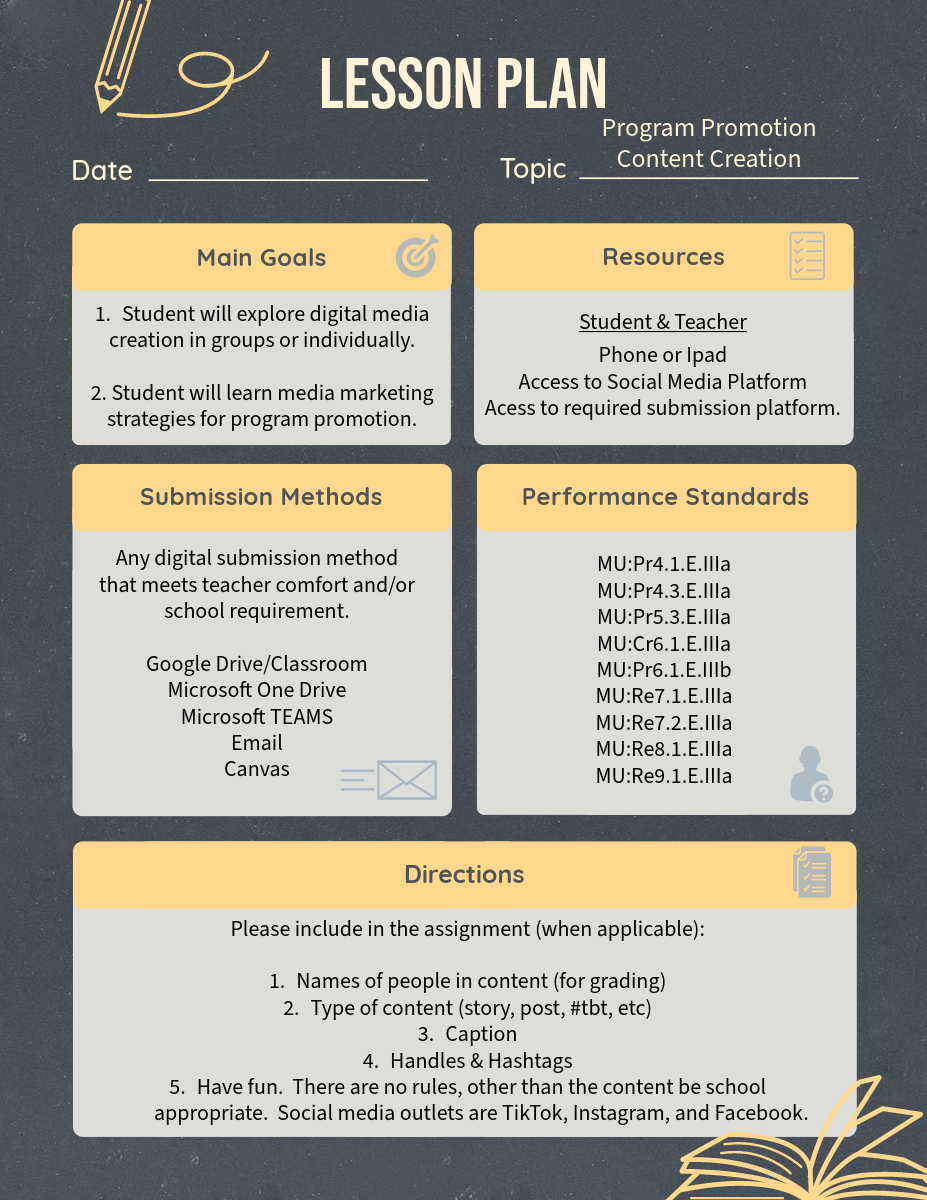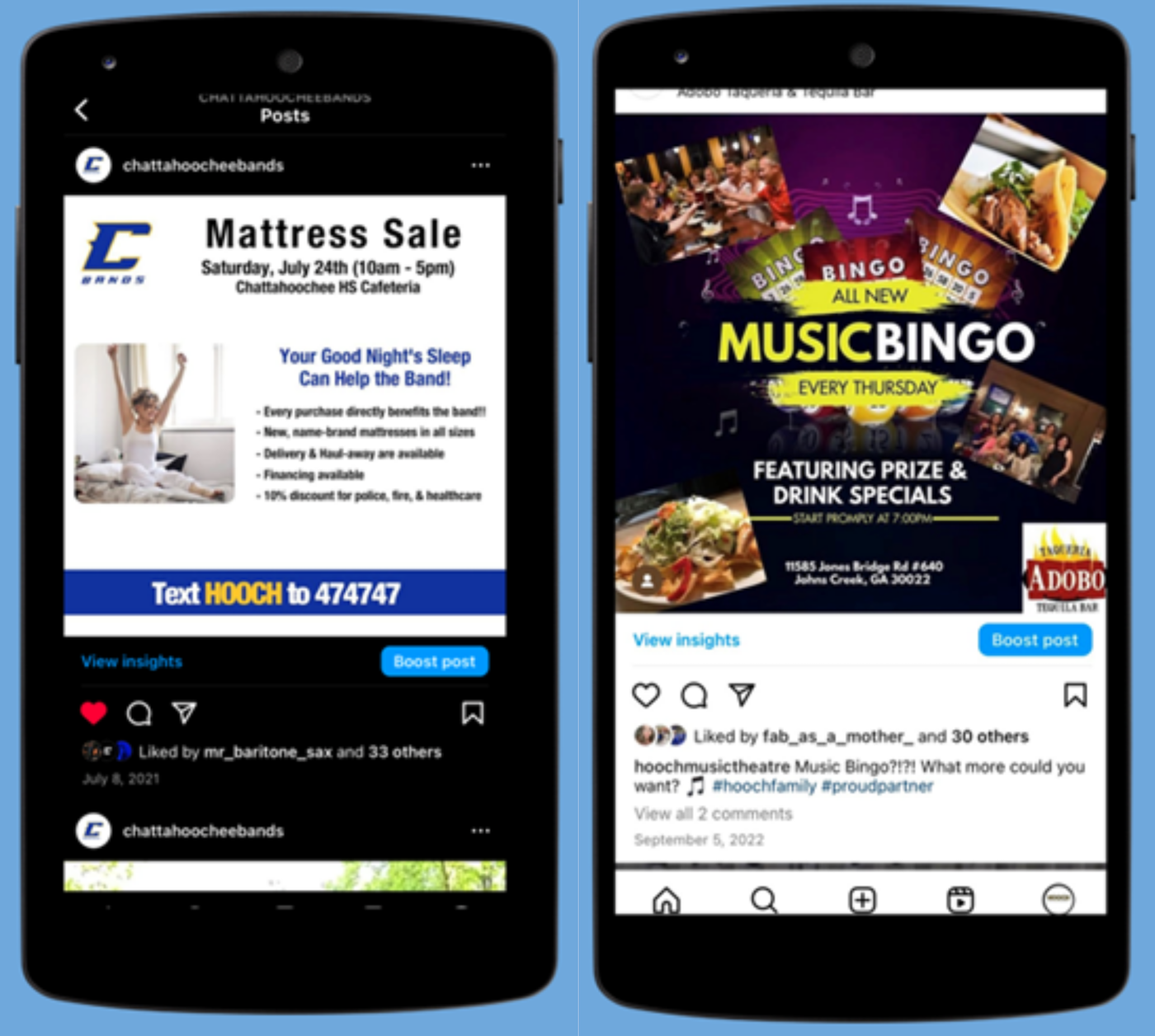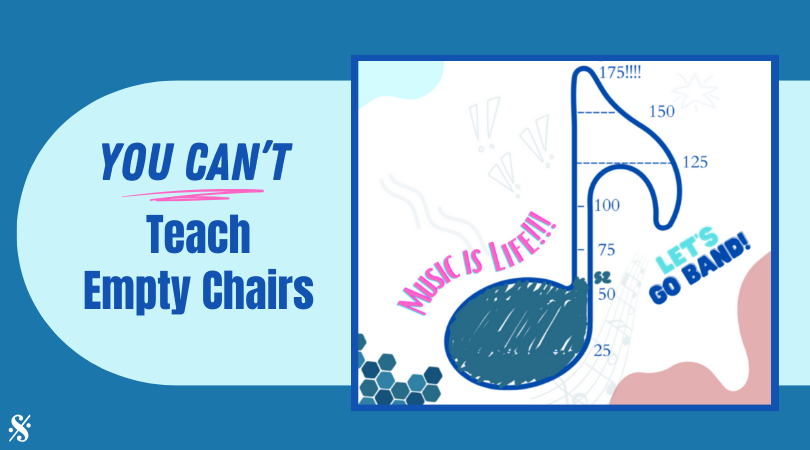**Before moving forward with any social media, you MUST consult with district policies and expectations as they vary widely! Use the following ideas within the guidelines of your district administration.**
Whether we like it or not, the world of social media is thoroughly intertwined with education. In our modern world, it can be new and exciting to have a social media presence that advocates, advertises, and allows for an involved student leadership team. The job of a music educator places many demands on us that fall outside of teaching music. Finding a way to balance all the spinning plates can be difficult. It can be hard to learn new technology that may not seem vital to the success of your program, but the benefits of having a social media presence are immeasurable. In this article, we hope to inform your exploration of Instagram and TikTok in a productive and organized manner.

Structure
Setting up a structure of student leadership, boosters, and staff members can be an excellent way to minimize your time committed to creating content (even though it’s tempting to do it by yourself!). This can be utilized with classroom and extracurricular leadership structures that fit the needs of your program. Just as we use student leadership and parent booster communities to assist the flow of productivity in our programs, we can incorporate social media into our existing organizational structure without creating more work for the director.


Training
Training your social media team can be as informal or as organized as you like. This could include a meeting during your morning planning time, giving an organized in-class assignment to an ensemble, or staying connected via email or GroupMe. Students who comprise your social media team have the power to reach beyond your group’s membership and advocate to the larger community of peers connected by the digital world. The important thing is once your team has been trained, you let them fly free (within the bounds of your oversight and good judgment)!

The director does need a solid grasp of how to make a post, story, reel, or any other facet of the platform being used. Once a preferred structure is in place for your program, active supervision is key to the success of your page as well as keeping you gainfully employed. While some of you may already be familiar with using Facebook for your program, many of the functions discussed in this article pertain to Instagram and TikTok. Even though these apps all have different names for their type of content, the creation process is very similar once you master a few skills.

Implementation
Utilizing a social media team allows your program to connect your fundraising goals to the wide world of digital real estate. View the platform as a billboard which you control for free. Assignments submitted by your students give them more ownership in your program and allow you to spend time running your program while simultaneously promoting it. This brings each student’s unique perspective, keeps you abreast of online trends, and helps you connect with a new audience every time you post.
Using social media to advertise boosts your post outside of your sphere of influence with sponsored and targeted ads. When exploring the variety of ‘Boost Post’ options attached to a specific post, you can set the type of boost and duration of your ad to drive the reach of your content beyond your current following. By dictating how many people your ad should reach, the almighty Algorithm will do the work to find people similar to your followers and direct your content to them. This tool will increase your revenue stream and the scope of advocacy and exposure of your program.
We hope by using some of the above structures, you will gain back the time required to train the next generation of healthy, well-rounded musicians the world needs!

Strategic use of social media is a component of nearly every profession. We should consider including its utility in our own pedagogy, as music is an intensely social entity. Teaching our students how to advertise and advocate for their program in a responsible manner teaches them how to be respectful and intelligent digital citizens. Combining the fun aspects of creating social media content with the creativity of our subject allows students to interact with music in a way that is both enjoyable and beneficial to the program and community.
Jennie Fabianski and Matthew Crisman work at Chattahoochee High School in Johns Creek, GA. Jennie is in her seventeenth year of teaching Chorus, Musical, and Technical Theatre, and Matthew has been Associate Director of Bands for five years. For more information about social media and how to begin implementation of this in your program, contact them through their website.
Related Reading:
How to Not Get Overwhelmed by Social Media
Social Media for Your Ensembles
What is Google Classroom?
If you would like to receive our weekly newsletter, sign up here.
Don’t forget to like us on Facebook too!
Learn. Share. Inspire.
BandDirectorsTalkShop.com






Leave a Reply
You must be logged in to post a comment.